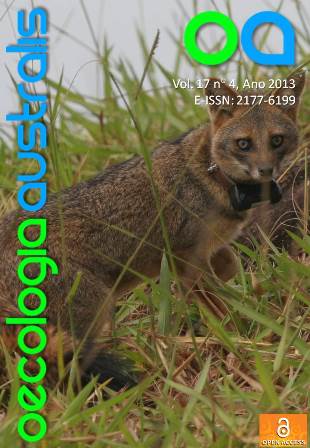DISTRIBUTION PREDICTIVE MODELING OF ENDANGERED SPECIES: OVERVIEW OF RESEARCH
Keywords:
geographical distribution, multiscale, predictive modeling, scientometrics.Abstract
The knowledge about species geographical distribution and the factors that influence species occurrence is especially important for biodiversity conservation. Species distribution predictive modeling (SDPM) can be an important tool to support studies and applications for conservation of endangered species. Here, we used a scientometric approach to evaluate the academic production on distribution predictive modeling of endangered species, analyzing some relevant aspects about the published studies on this topic: representation and trends of the academic research, research themes, use of variables indicating anthropism, environmental variables included in analysis, scales and variation of the importance of environmental variables on different scales. We analyzed 101 papers about predictive modeling of endangered species that represented only 11% of global studies on SDPM. The most frequent topic in the papers was related to indication of priority areas for conservation. Over half of the studies included variables indicating anthropism and the most common spatial scales were macro-regional/global and regional. On the other hand, the multiscale approach was found in only 10% of the papers. Considering the studies analyzed, there seem to be a relationship between climatic variables and macro-scales and non-climatic variables and fine scales, as previously reported in the literature, however, we emphasize that almost a third of the studies disagreed with this pattern. This study provides an overall view of the approaches used in predictive modeling studies on endangered species and is intended to stimulate discussion about the use of variables indicating anthropism and multiscale analysis.


